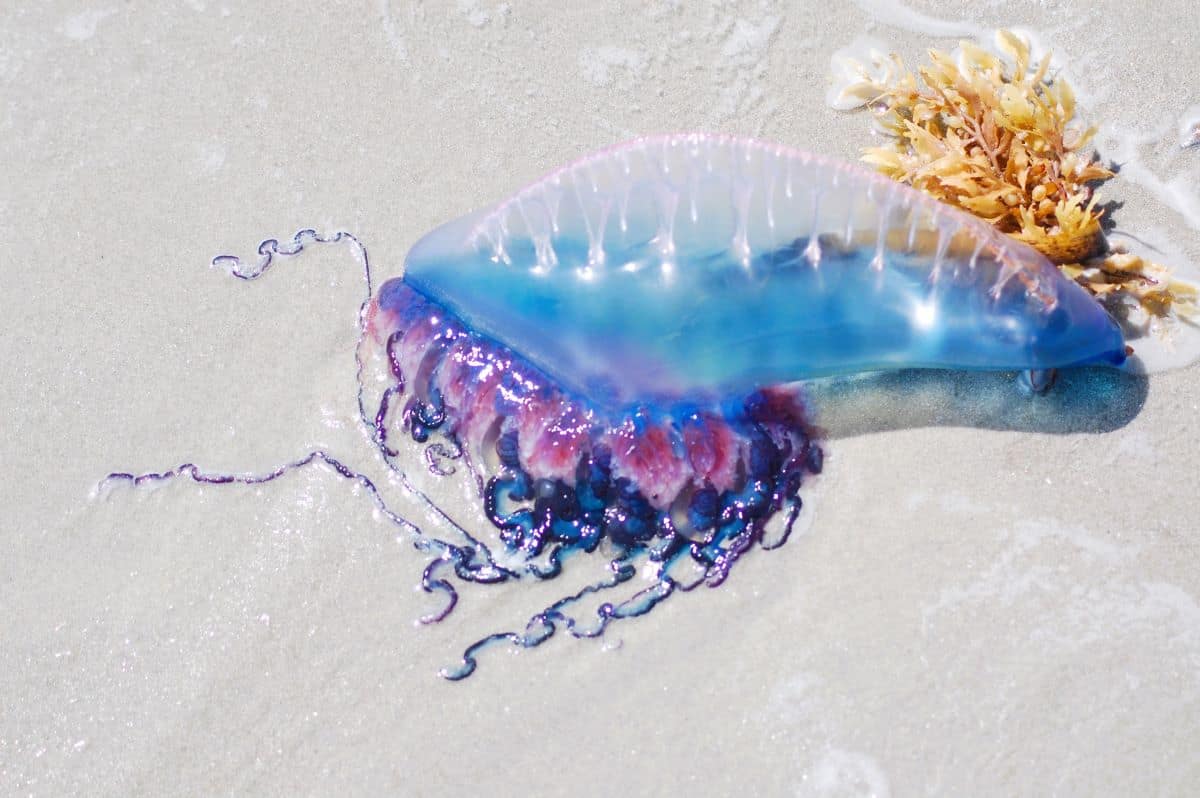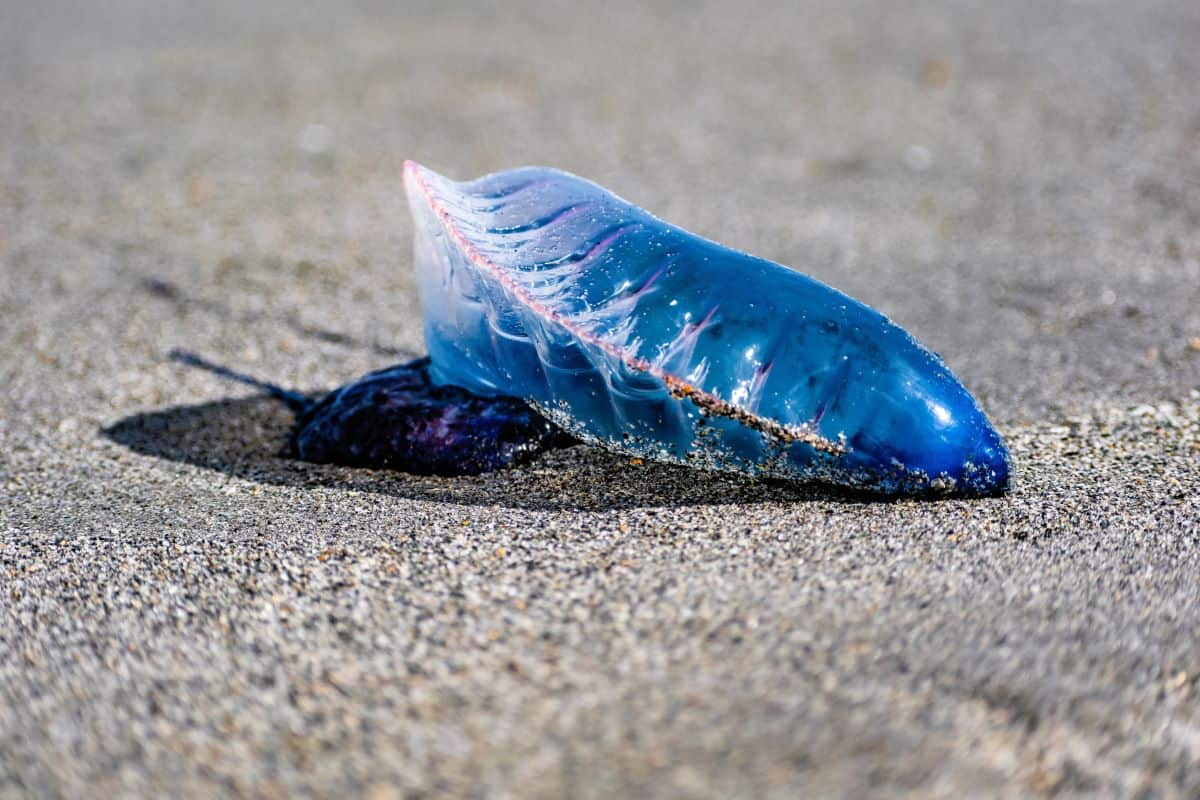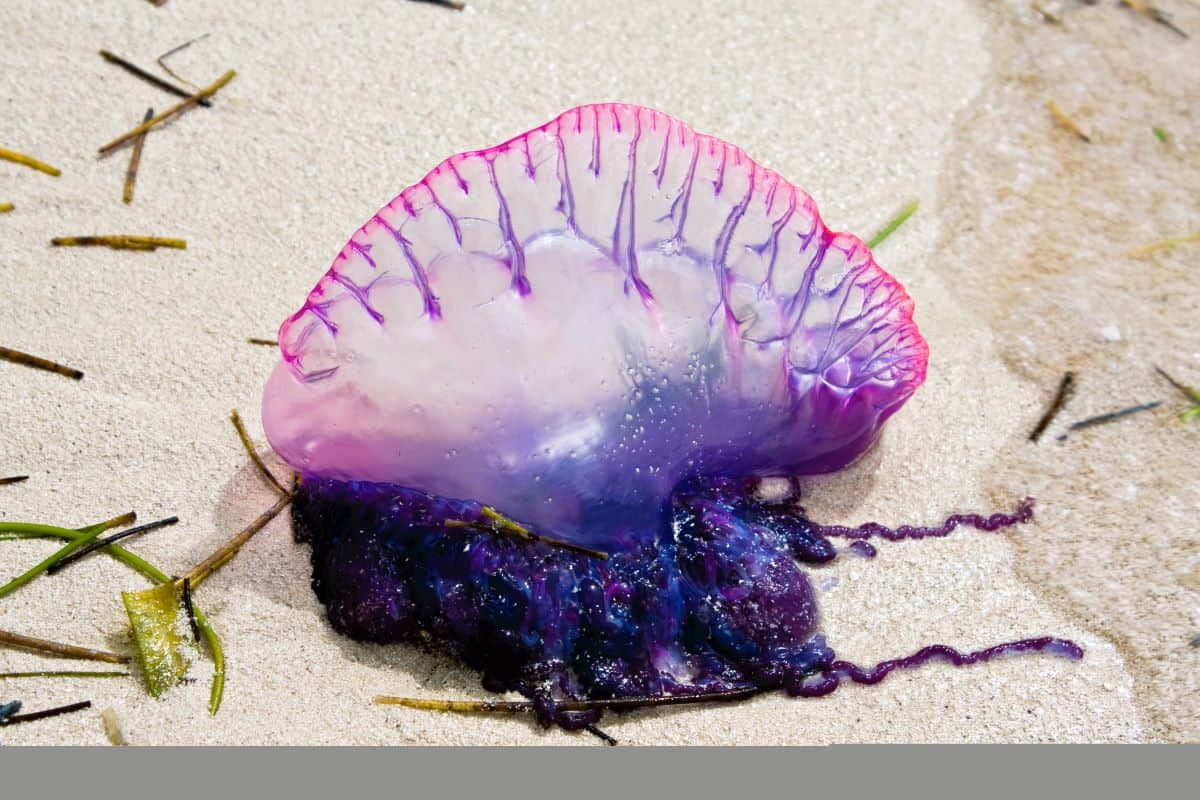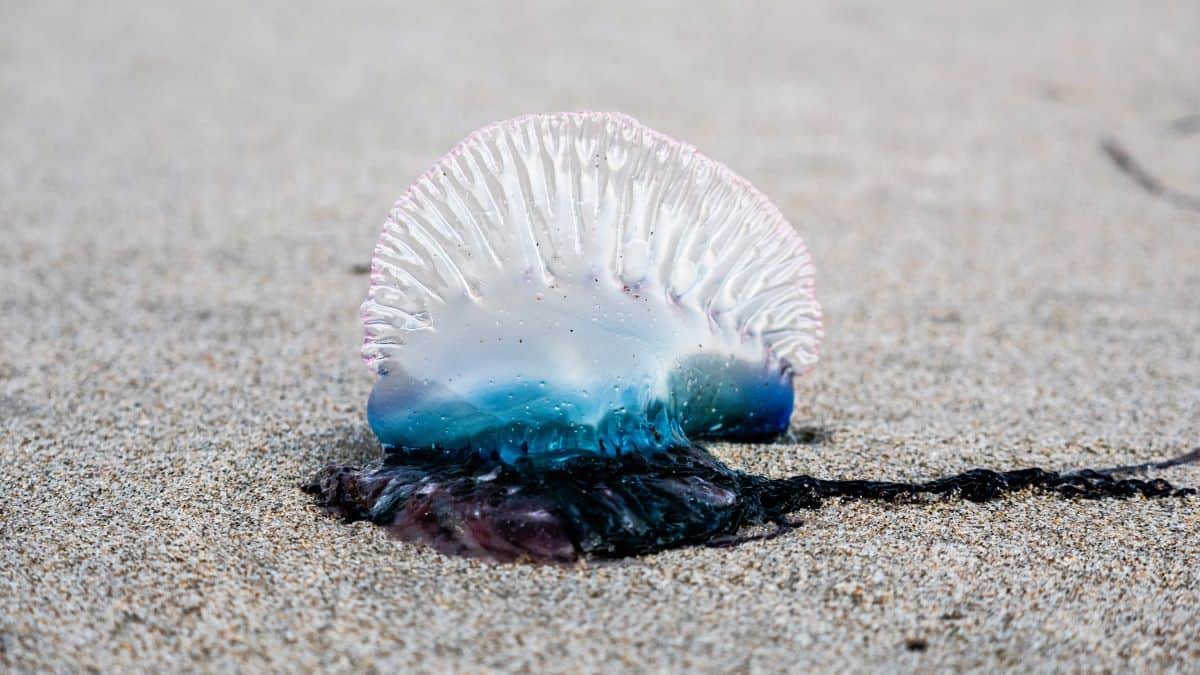I'll never forget the year I spent living in Indialantic, a charming town where I was just a five-minute walk from the beach.
I fell into a routine, taking daily walks along the shoreline, breathing in the salty air and letting the rhythmic sound of the waves soothe me.
But something I quickly learned from my local Facebook group was the arrival of Man o'War season.
Suddenly, my feed was peppered with pictures of these stunning, almost alien-like creatures that had washed up on our shores.

The locals knew the drill - take pictures, admire their beauty, but never touch.
But I realized that visitors might not be aware of this, and the last thing I wanted was for someone's vacation to be marred by an unexpected sting.
So I decided to use my knowledge to help spread the word. And that's why I'm sharing this with you all today - to help you admire and respect these incredible creatures from a safe distance.
What Exactly is a Portuguese Man o'War?
Despite its jellyfish-like appearance, it's actually a siphonophore.

Now, you might be thinking, "A sipho-what?"
A siphonophore is a colonial organism, which means it's made up of a team of individual creatures, or zooids, each with a specific job to do.
And together, they make up the vibrant float that we often mistake for a jellyfish. Pretty cool, huh?
But why the name 'Portuguese Man o'War', you might wonder?
Well, our aquatic friend is quite the history buff. Its name is thought to be a nod to the 18th-century sailing ship, the 'man-of-war'.
When the Portuguese Man o'War inflates its float, it takes on a shape that's reminiscent of the ship with its sail up.

And the 'Portuguese' part?
That's likely due to its resemblance to the Portuguese Caravel, a small, nimble sailing ship that was all the rage in the 15th and 16th centuries.
So not only is this creature a marvel of nature, it's also a bit of a history lesson!
When and Where Might You Encounter Them?
They're more commonly seen on Florida's beaches after storms or strong winds which blow them toward the shore.
Generally speaking, spring is when you're most likely to come across one of those zooids.
They can show up on any beach, but they're more common in South Florida.
Why You Shouldn't Touch a Portuguese Man o'War
Now, I know what you're thinking - they're beautiful and fascinating, why wouldn't you want to get up close and personal with a Portuguese Man o'War?

Well, here's the catch. Those long, elegant tendrils that trail behind them? They're filled with venom, and a sting can be really painful and in rare cases, even dangerous.
What to Do If You Encounter One
So, what should you do if you encounter a Portuguese Man o'War?
First, look but don't touch.
If you see one on the beach, give it a wide berth. If lifeguards or beach officials are around, let them know - they can safely remove it.
And if you do get stung?
Seek immediate medical attention. While it's usually not life-threatening, it's better to be safe than sorry.
And, no, this isn't the most dangerous animal in Florida, but anyone who's ever been stung by one, will tell you it's terrifying.
Wondering what other Florida wildlife is out to get you? Read more: 7 Terrifying Florida Wildlife Species: Unforgettable Encounters on Your Visit
I'm kidding about the "out to get you," of course! Keep your distance and be respectful of local wildlife, and you'll be just fine.
So there you have it, folks!
The Portuguese Man o'War - a living testament to the beauty, complexity, and occasional danger that Mother Nature offers us.
Remember, the beach is a place to enjoy, but it's also home to many creatures, so let's enjoy it responsibly. Happy beaching!
